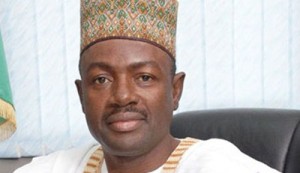The Nigeria Airforce made the nation proud, and indeed the Nigeria Armed Forces, when President Goodluck Jonathan on Tuesday unveiled a Surveillance Unmanned Aerial Vehicle (UAV), produced locally by the Airforce.
As part of the Federal Government’s effort to tackle insecurity in the country, the Nigerian Air Force.
The vehicle named GULMA, is the first Unmanned Aerial Vehicle to be produced in the country according to the authorities, and will be used to fight terrorism and other sophisticated crimes through enhanced air surveillance.
At the commissioning ceremony held at the Nigerian Air Force Base, Kaduna, President Jonathan commended the nation’s armed forces for their breakthrough in science and technology innovation, and assured of the federal government’s willingness to support the security agencies in their research projects.
He urged the private sector to key into the breakthrough made by the Air Force in order to achieve through mass production, the highest and best commercial use of this prototype Unmanned Aerial Vehicle.
Earlier in an address, the Chief of Air Staff, Air Marshal Alex Badeh said that the main objective of producing the surveillance vehicle was to instil self-sufficiency in the fields of aviation and military technology and also to discourage the military’s over dependence on developed nations for supply of security equipment.
He further disclosed that the unmanned aerial vehicle has been designed to meet vast expectations and needs, and could be used by the nation’s armed forces and other security agencies for both internal and security operations.
He added that the Nigerian Air Force spent between $2million to $3million to train the eleven pilots that will operate the UAVs, and therefore called for more funding.
Supervisory Minister of Defence, Labaran Maku, said that the development of the unmanned surveillance aircraft by the Nigerian Air Force at the time the country is battling with terrorism is an indication of the present government’s resolve to provide security for the citizens. He urged other security agencies to incorporate it into their operations to fully harness their potentials.
The 40 kilogramme unmanned aerial vehicle is designed to pick objects 10,000 feet above sea level. Its history commenced in 2007 when the Nigerian Air Force introduced a 5-year manpower development programme in Aerospace engineering in collaboration with Cranfield University based in the United Kingdom.
The vision was to develop in-house capacity for advanced research and development in the country’s aerospace fields. The collaboration between the Nigerian Air Force and the University heralded the design and production of several small unmanned aerial vehicles, which were code named ‘Amebo’.
The vehicle, basically made of aluminium alloy structure and operated by radio control only, was designed and tested by the Air Force Institute of Technology (AFIT) in 2009.
Besides its diverse military application, the unmanned aircraft provides other benefits; in disaster management, power line surveys, law enforcement, telecommunications, weather monitoring, and aerial imaging and mapping. It is also rapidly, becoming an important tool in news coverage, environmental monitoring, and oil and gas exploration.
From a humble beginning in 2007, the Nigerian Air Force has grown capacity and capability in unmanned aerial vehicle production and operations. The authorities therefore believe that with adequate funding, this wealth of research could be harnessed to produce various categories of the vehicle to support internal security operations, and also provide civil agencies with aerial surveillance requirements.










